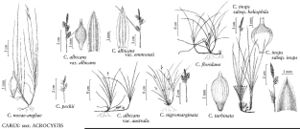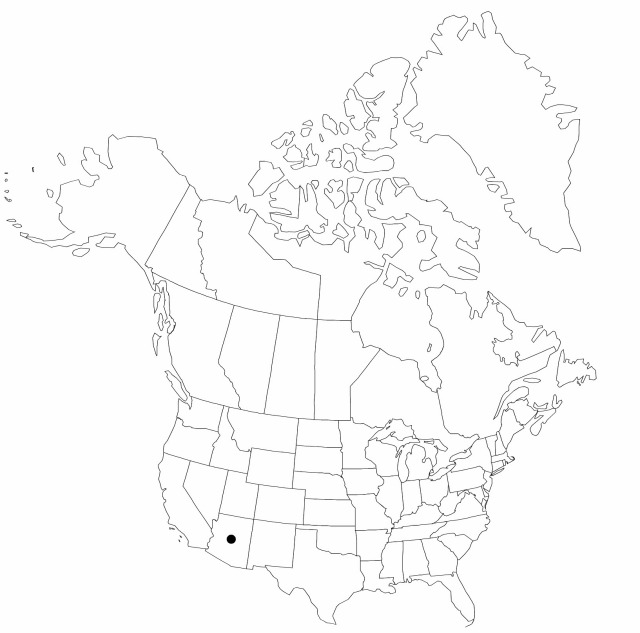Carex turbinata
Mexic. Halvgr., 265. 1850.
Plants loosely cespitose or with solitary stems; rhizomes ascending, brown, 0–5 mm, stout or absent. Culms 21–47 cm, scabrous distally; bases (remnants of old leaves) fibrous. Leaf-blades green, shorter than culms, 2–3.5 mm wide, herbaceous to coriaceous, papillose to scabrous abaxially, papillose to slightly scabrous adaxially. Inflorescences with both staminate and pistillate spikes; peduncles of staminate spikes 1.1–10 mm; proximal nonbasal bracts leaflike, equaling or exceeding inflorescences. Spikes: proximal pistillate spikes 2–5 (basal spikes 0); cauline spikes with the proximal separated, with 4–10 perigynia; staminate spikes (5.3–) 9.6–26.2 × (1–) 1.4–3.4 mm. Scales: pistillate scales whitish or pale-brown to dark reddish-brown, with narrow to broad white margins, ovate to lanceolate, 4.2–4.5 × 1.7–2.5 mm, equaling perigynia, apex acuminate or short-awned; staminate scales ovate to obovate, 6–6.2 × 1.6–2 mm, apex obtuse or acute to acuminate or short-awned. Anthers 2.2–3.3 mm. Perigynia pale green to yellow or pale-brown, 10–25-veined to at least mid body, obovoid to globose, 3.1–4.2 × 1.5–2.4 mm, as long as wide; beak straight, pale green to pale-brown, 0.4–1.1 mm, smooth, apical teeth 0.1–0.4 mm. Stigmas 3. Achenes brown, globose, round in cross-section, 1.6–2.6 × 1.5–2.4 mm.
Phenology: Fruiting mid Jul–mid Aug.
Habitat: Open pine forests, mountain slopes, oak-fir forests, moist stream banks, steep ravines
Elevation: 600–3300 m
Discussion
The two extremes in the morphologic variation in Carex turbinata are quite distinctive and may be correlated with latitude and elevation. An examination of specimens from across its range shows a continuum of variation in reproductive and vegetative characters.
Selected References
None.
Lower Taxa
"shortened" is not a number.No values specified.

